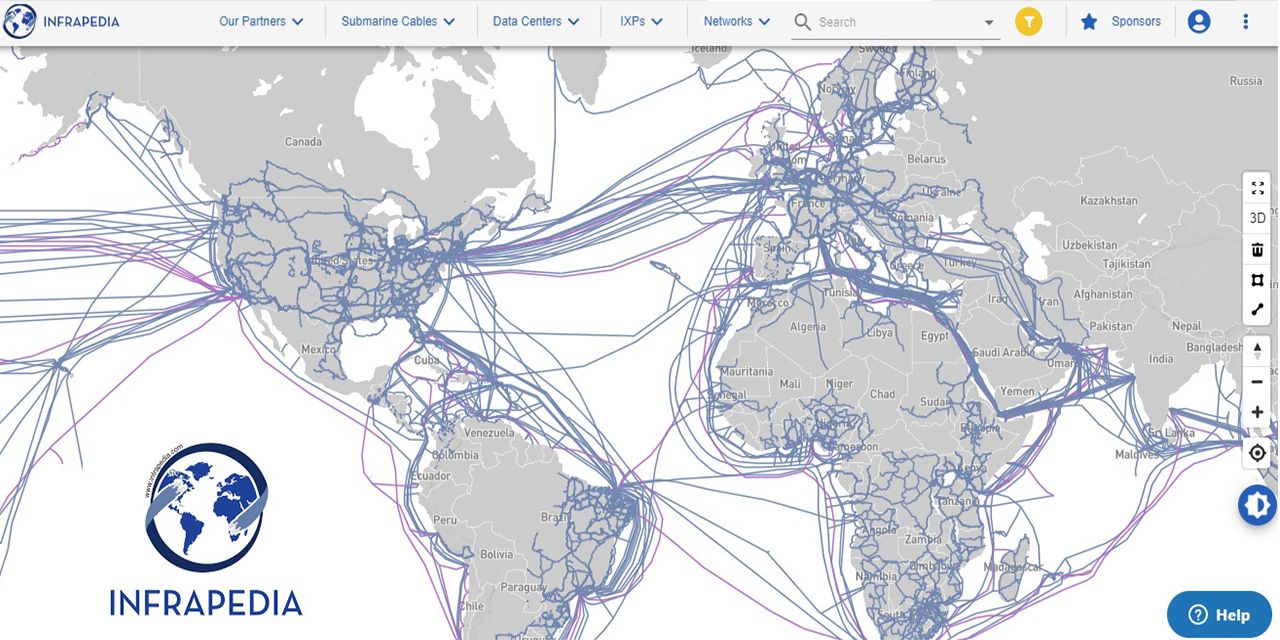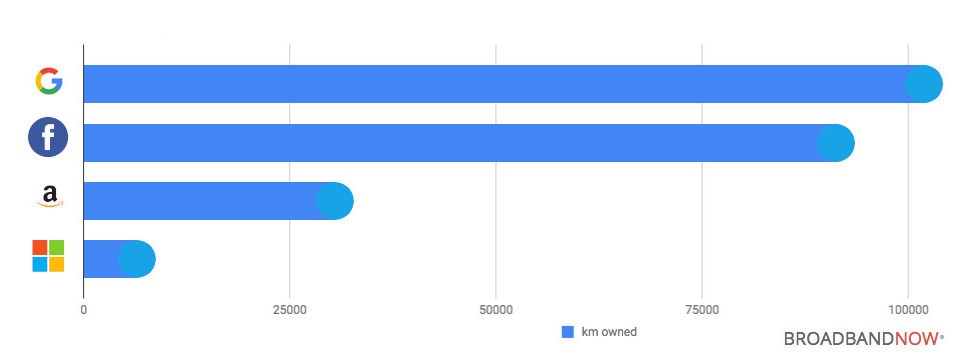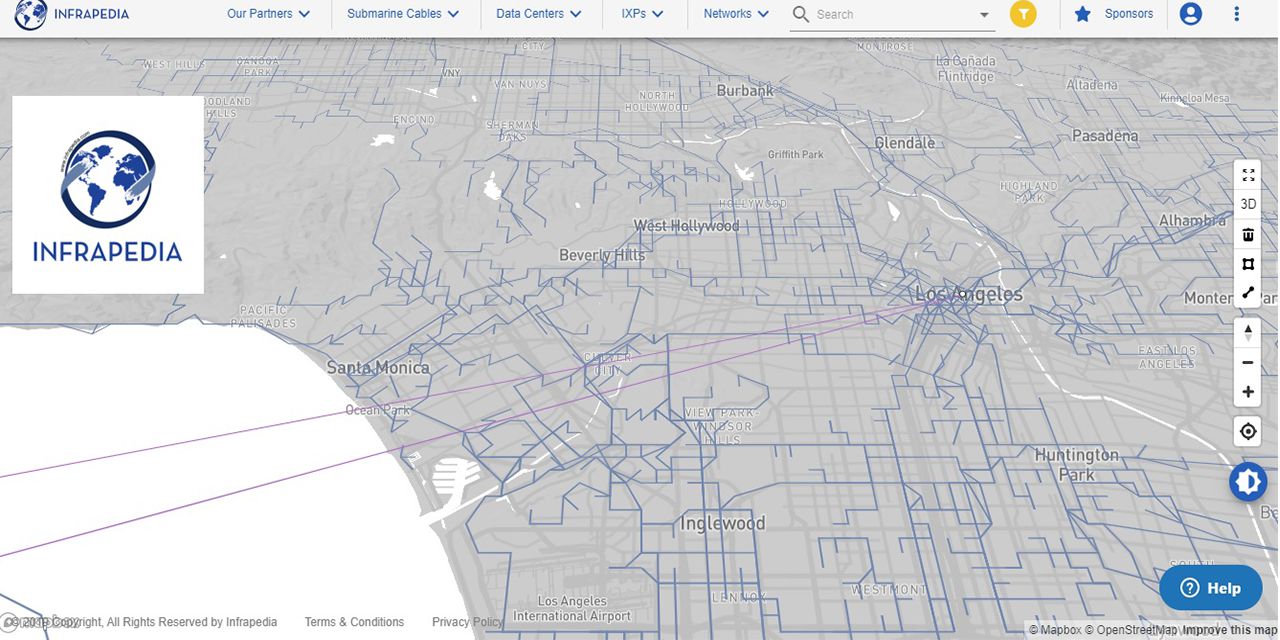Network engineers know all too well that most of the critical infrastructure which we think reside “in the cloud”, is actually located underwater. Now they use infrapedia as a vital planning tool to see where exactly current network and datacentre assets are located, to check the operational status of critical internet infrastructure – and to plan future development and investment.
 Image Credit: live.infrapedia.com
Image Credit: live.infrapedia.com
The global view of critical internet infrastructure:
To power the explosive growth of cloud-based applications and shift towards data-driven technology, submarine cables are of critical importance. Investors may have looked at buzz words such as AWS (Amazon web services), Microsoft Azure and the Google Cloud Platform – since this is where tech giants have seen the most growth in recent years. But for the questions they should really ask, are these:
What are the enablers to success in the cloud?
What enables a hosting provider to boast about a blazing fast content delivery network (CDN)?
Strategic enablers for internet service providers contain an important pillar: the critical infrastructure on which data and communication networks run. This include submarine cables, terrestrial cables, long haul fiber networks, data centers and internet exchange points. All of these can be viewed in perspective on platforms such as Infrapedia (The only free service with an open platform that covers submarine cables), Connected2fibre and Telegeography. So if you ever wondered how did Amazon succeeded in getting so many businesses to display the little logo AWS partner network – well, the answer is underwater: just take a closer look at an up to date map.
Big Tech is actively involved in submarine cable infrastructure:
Anyone who heard the expression “It is Google, Facebook, or Amazons’ world, we’re just living in it”, will understand the expression better when they evaluate just how much of the submarine cable infrastructure the TECH giants have acquired and invested in.
The involvement of Big Tech came as in recent years, internet backbone providers saw a gradual reduction in their stake of submarine cable infrastructure. Content providers including Google, Facebook, Amazon and Microsoft own an estimated 144 000 miles of submarine cable. They literally raced to acquire a growing share of the infrastructure in order to gain strategic advantage and secure continuity. Now, PE firms increasingly prefer to own subsea infrastructure as a common alternative to telco ownership.
Powering the cloud – Big Tech ownership of underwater cable:
 Image source: Broadbandnow.com
Image source: Broadbandnow.com
Using a map to plan and explore key internet infrastructure:
When accessing maps provided by any single cloud provider, they may provide a partial image of “their world”. This will hardly reflect terrestrial fiber which is still mainly installed by Telecom companies and there will be many gaps that are not covered. Therefore, to obtain a clear view of the full picture on current global infrastructure, using a map service that covers a broader range of stakeholders in the industry is key to better planning.

Image Credit: live.infrapedia.com
The CEO of Infrapedia, Mehmet Akcin, recently said: “Infrapedia’s main goal is to give engineers an operational global view of the internet infrastructure. We are also connecting network procurement professionals who want to connect directly with the infrastructure owners in our platform. Joining Infrapedia is easy, no fees needed to register and use Infrapedia. We have more than 3500 datacenters,15000 networks, and hundreds of fiber providers including submarine and terrestrial fiber network providers in our platform and thousands of business professionals already using it on a daily basis”.
To get an idea of how broadly industry stakeholders participate in Infrapedia, just consider the confirmed members of the board of advisors:
- Amy Marks, XSite Modular
- Anne-Marie Eklund Löwinder, Swedish Internet Foundation
- Arnold Nipper, Chief Technology Evangelist DE-CIX
- Brynn Fowler, Women’s Tech Forum
- Carlos Martinez, LACNIC
- Chris Street, ST Telemedia Global Data Centres
- Dave Crowley, Microsoft
- Eric Handa, AP Telecom
- Greg Mahlknecht, Always Active Technologies
- Jason Black, Ph.D., Uber Technologies
- James Daquino, ICM Partners
- Mehdi Daoudi, Catchpoint
- Naaz Bax, Seaborn Networks
- Nigel Bayliff, Aqua comms
- Zach Smith, Packet
Typically, engineers who use Infrapedia are faced with real questions to solve on an ongoing basis, for example: Which submarine cable routes should I pick between continents to create most diverse network? Or which common points do my selected network providers meet at? Location and alternative options also matter – so engineers ask: “what are the alternative datacentre in my city?”. Now, finally, there is an active, vibrant community where they keep going for answers to these vital question – without the need to pay any fees as it is free.
The CEO Mehmet Akcin is a Turkish-American entrepreneur with several granted patents on DNS, security and CDN networks, has worked at Microsoft, Yahoo, and ICANN for many years now focusing on Infrapedia and various other projects related to critical internet infrastructure. When asked about the ultimate goal for Infrapedia, he said: “As Steve Jobs said, I want to put a ding in the universe, my goal is to give people a global near realtime visibility and connect buyers and sellers directly to get the internet infrastructure at the best value possible and help connect next billions to the internet cheaper and faster”.
Conclusion:
The Global Submarine Market Outlook anticipates that it will be a $30Billion industry by 2026. This will grow at a CAGR of 16%, therefore representing a sizeable industry.
In every industry, there are tools for researching and navigating the landscape. Checking the realtime status of networks globally, with details on capacity, status and identity can now be done from one single dashboard. When it gets to the IOT and vast internet network: tools like Infrapedia will come in handy – in fact, it may be vital for some stakeholders as they plan their next frontier.








